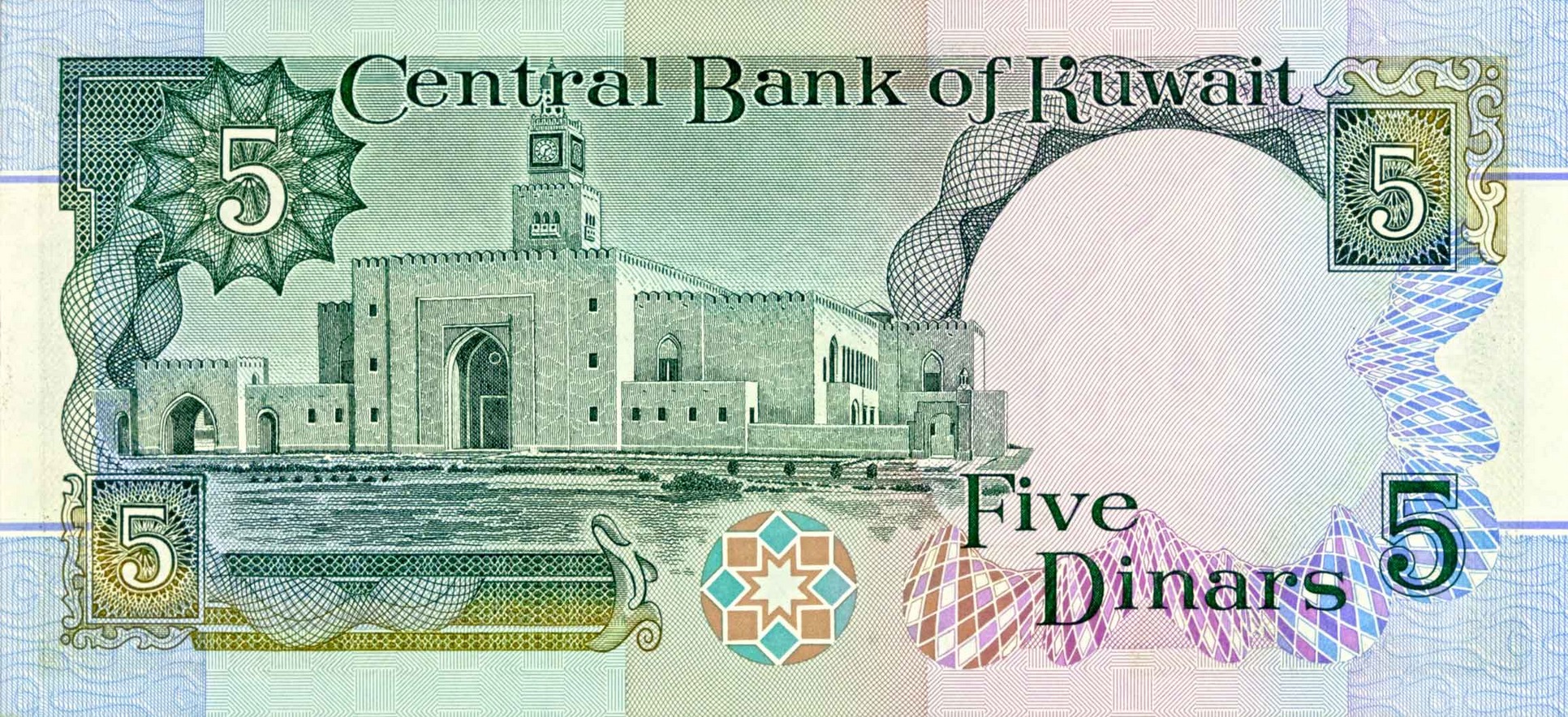Table of Contents
Average exchange rate of Kuwaiti dinar against US dollar
From 18 March 1975 to 4 January 2003, the dinar was pegged to a weighted currency basket. From 5 January 2003 until 20 May 2007, the pegging was switched to 1 US dollar = 0.29963 dinar with margins of ±3.5%. The central rate translates to approximately 1 KD = $3.53 USD
From 16 June 2007, the Kuwaiti dinar was re-pegged to a basket of currencies, and was worth about $3.28 as of December 2016. It is the world’s highest-valued currency unit.
Current exchange rates of Kuwaiti Dinar
There is absolutely no point stressing your brain in trying to calculate the exchange rate of the Kuwaiti Dinar with other top currencies, when there are good currency calculators out there to make the work simple and easy.
As a foreigner, when in Kuwait, you may want to do some shopping where you’ll need to calculate the cost of things in Kuwait comparing it with country’s currency. It’s always hard and tedious to do manually. And to know the right figure, it is always advisable you know the current exchange rate before making your calculation to avoid errors.
Also, endeavor to consult with your credit or debit card bank about the foreign exchange transaction fees charged for using your card in Kuwait City, Kuwait as exchange rates change over time.
Currently, the exchange rate for Kuwaiti Dinar and Dollar is given below;
| 1.00 USD US Dollar | = | 0.302970 KWD Kuwaiti Dinar | |||
| |||||
Brief History of Kuwait
Just like other countries, the Kuwait was colonized and administered by the British government. This was only possible at the time the Ottoman Empire after WWI was demolished during the World War I. As at in the 1930s, the Kuwait must have had an oil reserve of a very large quantity in its environment, this was enough to scale them through as an independent country. In 1961, Kuwait gained Independent and became fully responsible enough to lead and direct her people as a sovereign nation.
The only mineral resource the government of Kuwait depended on was the oil reserve. The government of Kuwait didn’t wait any longer than to develop the nation’s petroleum industry and its allied industries and indeed achieved rapid growth unlike any other.
That didn’t end there, in 1990, the Kuwait government who was led by Saddam Hussein, ordered the Iraqi army to occupy this small but very progressive sheikhdom. This was to protect and secure the country’s areas of wealth against intruders from intruder again.
In global rating of countries with large reserves of oil and large oil production rate, Kuwait happens to be one of the top countries to this regard. America, who is another player in the oil industry, has been Kuwait top partner in the buying and selling of crude oil for refinery and domestic consumption. However, before the Iraqis relinquished back Kuwait to the ruling family, the al-Sabah family, Saddam Hussein ordered its troops to set ablaze all oil wells it can set fire to. It was one of the worst environmental disasters the world has ever seen as it took nine months just to put out the fire.
Two years after from the horrible incidence, the Kuwait governments cease another opportunity to immediately refurbish, renew and refurbish the lost infrastructures and oil production was back to pre-invasion levels.
History of the Kuwaiti Dinar (Kuwait Currency) – The Past
The Kuwaiti Dinar came in as the official currency of the Kuwait in the 1960, which led to the abolishment of the Gulf rupee as the former Kuwait currency, equal to the Indian rupee. As the rupee was fixed at 1 shilling 6 pence, that resulted in a conversion rate of 13 1⁄3 rupees to the dinar.

Sometime in 1990, the Iraqi intruded the Kuwait territory with the aim of stealing and replacing the Kuwaiti Dinar with the Iraqi Dinar as the currency and large quantities of banknotes were stolen by the invading forces. Though, the Kuwait didn’t give up in the move to liberate the country. It was in this regard that the Kuwaiti dinar was reintroduced, allowing the previous notes, including those stolen, to be demonetized.
History of the Kuwaiti Dinar (Kuwait Currency) – The Present
The central Bank of Kuwait, in both 1993 and 2001 issued a commemorative 1-dinar polymer banknote. This was done for the purpose of celebrating the country’s liberation from the Iraq. The country also celebrated the second anniversary of its liberation by issuing the first commemorative note, dated 26 February 1993. The front features the map of the State of Kuwait, the emblem of Kuwait and on the left and right side of the note is the list of nations that assisted in its Liberation, in both English and Arabic.
The second commemorative note, dated 26 February 2001, was issued to celebrate the tenth anniversary of its Liberation. One feature from the note is an optically variable device (OVD) patch that shows a fingerprint, a reference to the victims of the invasion and occupation of Kuwait. Even though they were denominated as 1 dinar, both of the commemorative notes state that they were not legal tender.
Core Value of Kuwaiti Dinar


It is absolutely surprising that Kuwaiti Dinar is so far the currencies with the highest value in terms of exchange rate with other top currencies in the world. It is sub-divided into 1,000 fils. As at the time this article was composed and compiled, it was gathered that 1KWD (1 Kuwaiti Dinar) is equivalent to 3.29116 USD, or 4.35044 CAD.
Coins
The Kuwaiti coins were introduced in the year 1961. As at that time, the Kuwaiti coins were not different in shape and design from each other since they were newly introduced.
What you’d see on the Kuwaiti coin will be nothing less or more than a boom ship on the adverse of the coin. The year by which the Kuwaiti coin was printed is also indicated on the coin but in Islamic and Common Era in Arabic. The reverse contains the value in Arabic within a central circle with إمَارَة الكُوَيت (The State of Kuwait in Arabic) above and KUWAIT in English below.
Kuwaiti is a very different country, which has its country’ to be totally different from other country’ currencies.
The first series of coins included 1, 2, 5, 10, 20, 50, and 100 fils coins, but the first two have since been discontinued.
The last minted files was in 1988.
After a while, the Kuwait government had to establish the use of bank notes. The Kuwaiti dinar came in bank notes and in 6 six series. The six series of the Kuwaiti dinar are described in details below.
Kuwait Currency Bank Notes in Series
1st series
The first series was issued following the pronouncement of the Kuwaiti Currency Law in 1960, which established the Kuwaiti Currency Board. This series was in circulation from 1 April 1961 to 1 February 1982 and consisted of denominations of 1⁄4, 1⁄2, 1, 5 and 10 dinars.
2nd series
Just when the Central Bank of Kuwait was created in 1969, to immediately replace the Kuwaiti currency board, new 1⁄4, 1⁄2 and 10 dinar notes were issued from 17 November 1970, followed by the new 1 and 5 dinar notes of the second series on 20 April 1971. This second series was withdrawn on 1 February 1982.
3rd series
Here is the third series and was let out on the 20th Feb. 1980 just after the enthronement of late Emir Jaber al-Ahmad al-jaber al-Sabah, with various denominations which include 1⁄4, 1⁄2, 1, 5 and 10 dinars.
After a while, the introduction of a 20 dinars of banknote was established on the 9th of Feb. 1986. The country was in a state of emergency as a result of the Iraq invasion into Kuwait. Due to this effect, the third series of the Kuwaiti dinar was wiped out from the 30th 1991. Also, a good amount of the Kuwaiti third series currency was stolen during the attack by the Iraqi forces and some had appeared on the international numismatic market.
Fourth series
As the report tells, it was gathered that the fourth series was issued after the liberation on the 24th of March 1991. To this regard, the third series was immediately wiped out. This was allowed to take effect with lots of promises. The government of Kuwait promised its citizens that the reason for the changes made to the bank notes was to ensure that the economy of the country was made consolidated and to recover from the previous losses the country has experienced.
Denominations were 1⁄4, 1⁄2, 1, 5, 10 and 20 dinars.
Fifth series
The fifth series of Kuwaiti banknotes were in use from 3 April 1994 and included high-tech security measures which have now become standard for banknotes. Denominations were as in the fourth series.
Sixth series
The last series of the Kuwait banknotes was in circulation on the 29th of June 2014 by the Central Bank of Nigeria. Some of the bills are coarse so that the blind can identify them by touch.
READ ALSO: Top 10 Best Currencies in Africa
Conclusion
There is no doubt that Kuwait currently boast of a currency with the highest foreign exchange rate, and a good or precise knowledge about the country you intend visiting, helps a lot and by extension a plus. Aside from knowing the exchange rate, it is very wise to dig deep for some sensitive information about the country you are traveling to. This is for safety reasons.
In the above article, you can find the current exchange rate, history the country called Kuwait, history of the country’s currency called the Kuwaiti Dinar and many other vital information.
If you have further questions regarding this article, kindly drop your comment in the comment box below.
RELATED TOPICS TO READ




